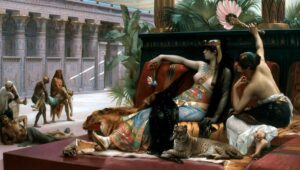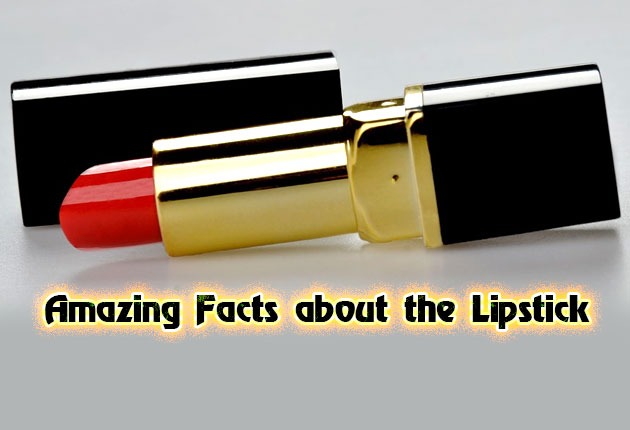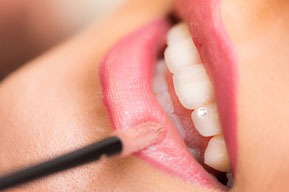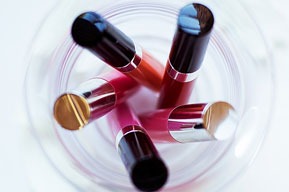The lipstick is certainly one of the beauty products many people, especially women, can’t leave home without. Even if you don’t put on any other product on your face, putting on a proper shade of lipstick does wonders. From the first French commercial lipsticks to the modern classics, like Dior or Vivienne Sabó, lipstick has always been an essential part of the classy, night-out look. It’s so simple, yet its history is complicated. Whether you own only one tube of lipstick or more than a dozen of them, it will be fascinating to know something about that coloring material you swipe across your lips.
1. The average woman spends $15,000 on makeup during her lifetime. Out of that amount, around $1,780 goes to lipstick, and don’t be surprised if most of them goes for korean lipsticks.
2. MAC Ruby Woo is the best-selling lipstick in the US and around the world. It gives a vivid red color with blue undertones and a true matte finish. The company said that four Ruby Woo lipsticks are being around the world every minute! If you haven’t tried that shade, you might think, “What makes it so special?” Well, it’s like a little black dress. It’s timeless, sophisticated and looks amazing for every skin tone and age.
3. The most expensive lipstick in the world is Guerlain’s KissKiss Gold and Diamonds Lipstick. While the original KissKiss only costs around $34, what you’ll be paying for this one is the bling. One hundred ninety-nine diamonds are encrusted in its 18-karat gold tube. Sparkly! The good thing is it’s refillable (because who would like to stop using that pricey tube?) and it’s available in 15 exclusive shades.
4. If you love your long-lasting lipstick, give thanks because Hazel Bishop existed. She is a biochemist who invented the first long-lasting lipstick after World War II. She tried making some dermatological products but did not make it to the market. Aiming to appeal to the people, she tried creating a non-drying and smudge-proof lipstick that would not smear on teeth, people, glasses, cigarettes or clothing. Using lanolin, dye and molten wax, she created the first long-lasting lipstick.
In 1950, she founded her own business to sell her creation for $1 each. It was promoted in ads, featuring a man and woman amorously embracing, with a tagline that says: “It stays on YOU… Not on HIM!” The product was a success – selling out every tube on the first day of launch.
5. The colorful history of lipstick started around 3,500 BC with Queen Schub-ad of the ancient civilization of Ur. The Sumerian Queen used white lead as a base and then applied crushed red rocks as a lip colorant.
6. Ancient Egyptians wore lipstick to show social status rather than gender. Men and women boldly applied makeup as part of their daily routine. They crushed gemstones and white lead to decorate their faces, mainly on the lips and around the eyes. Lips were also colored using red ochre, which was either applied alone or mixed with resin or gum.

8. Probably before Cleopatra’s carmine discovery, Ancient Egyptians extracted red dye from fucus-algin, 0.01% iodine, and some bromine mannite. However, this concoction resulted in serious illnesses. And if they wanted their lips to shimmer, they used fish scales and made advantage of its pearl-like luster.
9. It has become a social mandate for wealthy Ancient Egyptians to apply lip paint using wet sticks of wood while alive. When they were dead, at least two pots of lip paint are put in her tomb.
10. In Ancient Greece, however, lipstick was seen as scandalous, since it is worn predominantly by prostitutes. The first known formal regulation of lipstick was made in this context. Under Greek law, prostitutes who appeared in public either at the wrong hours without their lip paint could be prosecuted for “improperly posing as ladies.”
11. If you think Ancient Egyptians’ lipstick made of bugs is gross, the Greeks’ lip coloring is kind of worse. Bizarre ingredients like human saliva, sheep sweat, and crocodile excrement can be found in their lipsticks.
12. When Greece declined, the Roman Empire got well underway and the lipstick was reverted to defining social status. Wealthy women in Ancient Rome had their own professional team of makeup artists and hairstylists called cosmatae. The wife of Emperor Nero, Empress Poppaea Sabina, had at least 100 attendants to “maintain her looks and keep her lips painted at all times.”
13. During the Middle Ages, people from England see women who wear makeup as an incarnation of Satan. The religious teaching at that time was so strict that to alter one’s face means challenging God and His workmanship.
14. Strange laws regarding the wearing of lipstick were introduced during the recent centuries. During the 1700s, Pennsylvania allowed the annulment of marriages because of that little tube of coloring for the lips. That time, a man can have his marriage annulled if his wife had used lipstick or other cosmetics during their courtship because it was equal to trickery. Meanwhile, in 1915, the Kansas state legislature introduced a bill that would have made it a crime for women under the age of 44 to wear a lipstick, because it creates a “false impression.” Fortunately, it was not passed.
15. Red lipstick has been a feminist symbol for the suffragette movement in the United States. Feminist leaders Elizabeth Cady Stanton and Charlotte Perkins Gilman marched at the 1912 New York Suffragette March wearing bright red lipstick. The cosmetic began to be regarded as a representation for female social liberation and a symbol for American womanhood.

17. Lipstick is used to describe an economic trend. The “Lipstick Effect” refers to the theory that in times of crisis, consumers will buy less expensive indulgences. For instance, instead of buying diamonds and jewelry in times of recession, they will opt for lipstick instead. The term was coined by Leonard Launder, a chairman for Estee Lauder, who consistently observed that lipstick sales tend to increase in times of economic uncertainty. For instance, lipstick sales doubled in the months after the 9/11 terrorist attacks.
18. Lipstick sales have also been proven to go up on gloomy and rainy days. Perhaps people feel the urge to color up a bit during these seasons.






